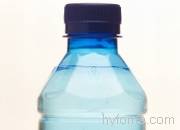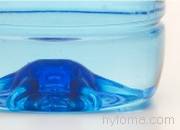
| branches > drank > mineraal water |
Dit artikel is nog niet beschikbaar in de door u gekozen taal
Water
Inhoudsopgave
 | Minerals the human body needs / Influences | |
 | Origin of natural mineral water | |
 | Bottling regulations for mineral water and allowed interventions | |
 | Regulations for table water |
Minerals the human body needs / Influences
Water is very important in physiological terms for the human body. Water is required to transport matter, transmit signals and regulate temperature. Minerals are vitally important for these functions.
| Minerals | Required daily, in mg | Affects |
| Sodium | 550 | Liquid balance, muscle function |
| Chloride | 830 | Stomach acid, liquid balance |
| Potassium | 2000 | Liquid balance, heart function |
| Calcium | 1000 | Teeth and bones, cramp inclination |
| Phosphate | 700 | Teeth and bones |
| Magnesium | 300 - 350 | Nerve function, headache |
| Iron | 10 - 12 | Red blood corpuscles, tiredness |
| Zinc | 7 - 10 | Wound healing, hair loss |
| Iodine | 1,8 - 2 | Goiter formation |
Origin of natural mineral water
A distinction is made in European law between mineral water and table water.Natural mineral water undergoes a long journey before it is bottled. Surface water from rain, snow or hail penetrates the soil and seeps up to several hundred feet down into the earth. This process may take centuries.
The rock layers through which the water passes are responsible for the mineral contents and thus also the taste. The water is thus cleansed and absorbs important minerals such as magnesium, sodium or calcium.
The water seeps through the soil layers until it reaches an impermeable layer, for example clay. If this layer is not absolutely impervious, some of the water still seeps through. The result: several groundwater layers are created on top of one another. Mineral water primarily comes from lower groundwater layers. The mineral water is often enriched with natural carbon dioxide.
Mineral water from a spring contains a stable proportion of certain minerals. This proportion is tested by independent laboratories and is shown on the bottle.
Conductivity ranges between 1.5 and 2.0 mS/cm.
Bottling regulations for mineral water and allowed interventions
Mineral water is bottled as naturally as possible. Only a few interventions such as de-ferrization and de-sulpherization are permitted. The quality of the water is monitored permanently. Springs are managed very carefully in order to prevent or immediately detect influxes of surface water.
Natural carbon dioxide must be removed in order to extract and add it to subsequent process steps. Mineral water may only be bottled in the immediate vicinity of the spring. The mineral water spring companies generally have several springs whose names are shown on the label of the bottle.
Regulations for table water
The regulations for table water are not so comprehensive. Table water may also be surface water which is treated accordingly and whose mineral content is adjusted to the requirements and taste of the particular product.A brand-name product can therefore be filled at different places throughout the world using the same technological values.
 back to top
back to top

 bedrijven
bedrijven



